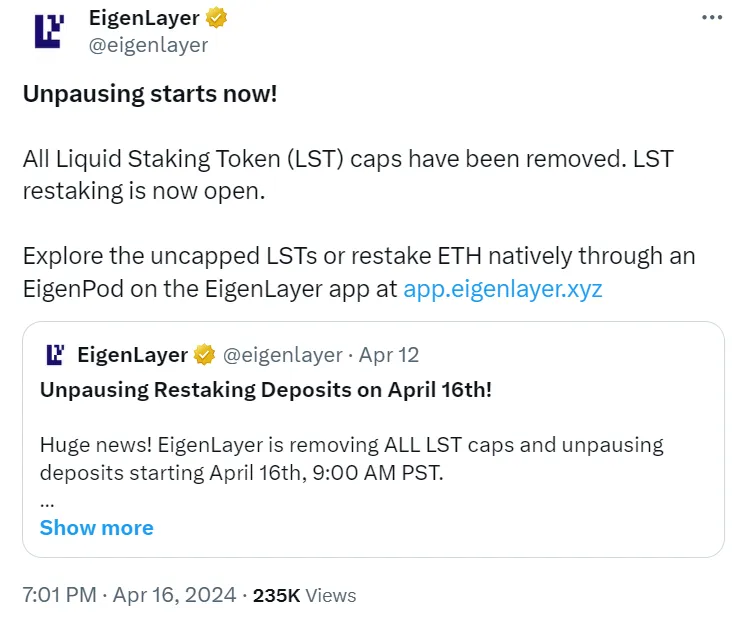Article Introduction: EigenLayer, a key player in Ethereum’s liquid staking landscape, finds itself at a critical juncture as it grapples with the potential of a severe yield crisis. As the largest re-staking protocol on Ethereum in terms of total value locked (TVL), the platform’s ability to sustain high yields is under scrutiny from industry experts.
Emerging Challenges: The protocol, which saw its TVL skyrocket, might be outpacing the capabilities of its Actively Validated Services (AVS). This mismatch could precipitate a significant downturn in yield performance. Chudnov, a notable developer from 3Jane derivatives exchange, highlights the severity of the situation, stating, “EigenLayer’s growth to over $15 billion in TVL is outstripping the demand of AVS by far, with less than 10% of that figure needed for effective security. This could drastically drop yields.”

Recent Developments: EigenLayer’s decision to lift restrictions on all liquid staking tokens (LSTs) earlier this month was part of its aggressive expansion strategy since its mainnet launch. Staking through EigenLayer allows users’ tokens to be automatically delegated to node operators, securing AVS while generating staking rewards—a portion of which benefits the users.
However, the core issue lies in the protocol’s operational dynamics. Chudnov elaborates, “The AVSs are not nearly requiring $1.5 billion, much less $15 billion, for security purposes. The foundational principle of Proof-of-Stake is maintaining a stake value higher than the possible gains from a validator’s dishonest actions, which is not the case here.”
Market Position and Risks: Currently positioned as Ethereum’s second-largest protocol after Lido, EigenLayer’s TVL has increased by over 16% in the past month, reaching approximately $14.15 billion, as reported by DefiLlama. Yet, the drop in altcoin prices poses further risks, reducing the incentive for AVSs to retain excessive capital.
Strategies for Stability: One potential, albeit temporary, solution might involve multiple token launches to escalate security budget needs, but this may merely postpone the underlying issues. A more sustainable strategy suggested by Chudnov involves integrating EigenLayer more deeply with the broader DeFi ecosystem. He asserts, “If EigenLayer can cement its role within the DeFi landscape through its liquid re-staking tokens and other financial primitives, it could effectively secure a more robust and cost-efficient buffer for AVSs to stabilize.”
Conclusion: As EigenLayer stands at the crossroads of expansion and efficiency, its next steps could very well determine its trajectory in the competitive landscape of decentralized finance. The call to increase utility and deepen integration within DeFi is not just about averting a crisis but setting a foundation for long-term resilience and growth in the blockchain ecosystem.

